Does a Hydrangea Need Full Sun or Shade to Grow Best?
Updated: Apr. 28, 2023
Many gardeners wonder, "Do hydrangeas need full sun, or do they flower better in shade?" Get answers, plus the best sun and shade varieties.
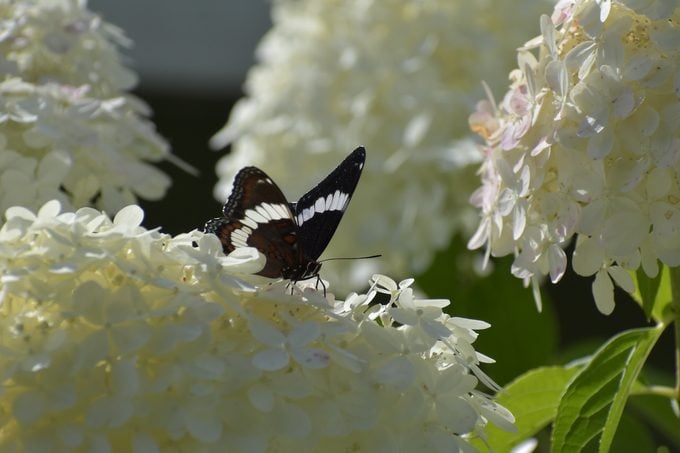
Few flowering shrubs provide as much bang for your buck as hydrangeas. These showstoppers can provide gorgeous color throughout the spring, summer and fall. But you’ve got to know which types of hydrangeas to plant, and where to plant them. Many people wonder, “Does my hydrangea need full sun, or can I plant it in shade?” Here’s the answer.
On This Page
Does a Hydrangea Need Full Sun?
Sun helps many varieties bloom, but full sun is rarely required. Bigleaf hydrangeas, which are the variety most people think of when they think of these popular shrubs, can take full sun in cooler areas (zones 4 to 6). But in warmer areas (zones 7 to 9), they do best with morning sun and afternoon shade. In fact, many types of hydrangeas prefer some shade during the afternoon heat, including panicle and smooth (mophead) varieties. Filtered light all day long can be ideal.
Learn when to prune hydrangeas for big, showy blooms.
What Happens if Hydrangeas Don’t Get Enough Sun?
When hydrangeas lack the sunlight they need, they can develop weak, leggy stems. They are also unlikely to flower well, with underdeveloped heads that droop. The flowers that do develop may be less vibrant in color. This can especially be a problem with smooth (mophead) and bigleaf varieties. Try increasing the amount of sunlight, especially during the morning hours.
Discover the best hydrangea bush for every yard and growing condition.
Can Hydrangeas Get Too Much Sun?
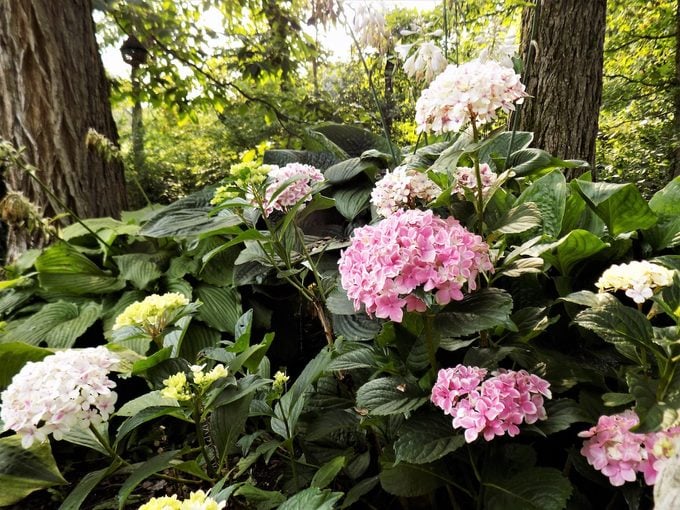
In warmer areas, many hydrangea types will suffer in the afternoon’s scorching sun. The leaves and flower heads may burn, turning brown. If you notice this, that means your hydrangea is getting too much sun. Try moving it into filtered shade, or an area where it gets only a few hours of morning sun.
Even in cooler zones, full-sun hydrangeas are likely to need extra watering, since they wilt quickly in dry soil. When it comes to hydrangeas, water regularly but only when the soil feels dry. Stick your finger into the dirt, and if it’s dry, soak the plant well. Remember that hydrangeas need well-drained soil—moist, but not soggy.
Check out 6 stunning white hydrangea bushes to grow.
Are There Any Hydrangeas That Can Take Full Shade?
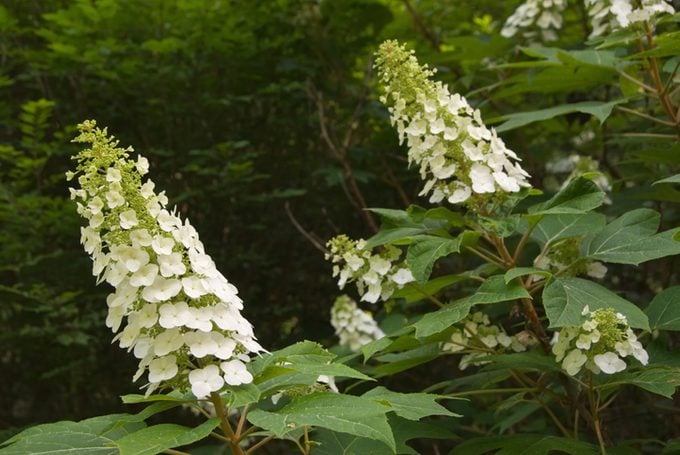
If you can provide filtered light or even a few hours of dappled morning sun, consider oakleaf hydrangeas. These plants grow in the forest understory in the wild, and are more adapted to shadier conditions. In full shade, they may not bloom as well, but they’re unlikely to be affected by weak stems.
Climbing hydrangeas, which cling to tree trunks to grow upwards in their native habitat, work best in shadier conditions. However, they generally won’t flower abundantly without at least some filtered sun.
Psst—even expert gardeners don’t know these fascinating hydrangea facts.
Hydrangeas That Prefer Full Sun
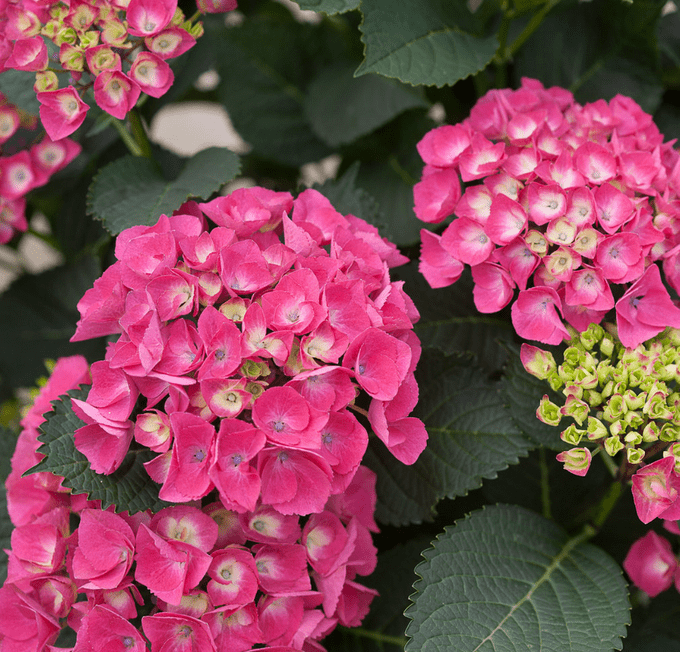
-
Incrediball hydrangea (H. arborescens): This popular series is beloved for good reason. The flower heads aren’t just big–they’re incredible! (zones 3 to 8; 5 feet tall and wide)
-
Limelight hydrangea (H. paniculata): Many panicle hydrangeas do well in full sun, and Limelight is an especial favorite. (zones 3 to 9; 6 feet tall and wide)
-
Cityline hydrangea (H. macrophylla): If you’re looking for a traditional bigleaf hydrangea, the Cityline series shines in bright sun. (zones 5 to 9; 2 feet tall by 3 feet wide)
Here’s how to change the color of your hydrangeas.
Hydrangeas for Part Shade
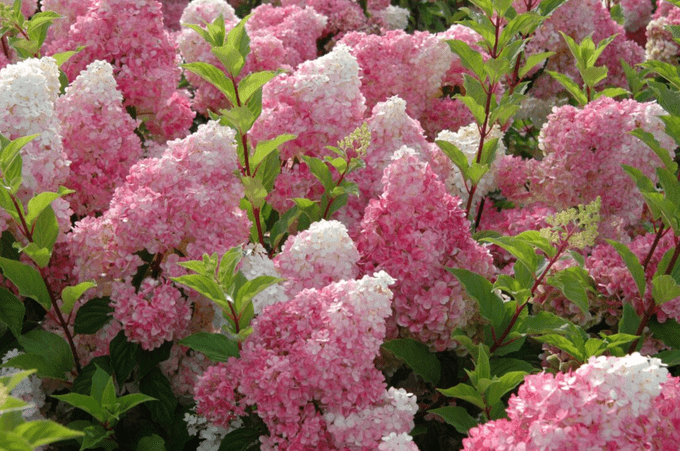
-
Endless Summer hydrangea (H. macrophylla): This bigleaf series has won a place in gardens everywhere with its ability to rebloom from spring through late summer. (zones 4 to 9; 3 to 5 feet tall and wide)
-
Annabelle hydrangea (H. arborescens): The giant snowy flower heads on this summer bloomer are sure to catch the eye. (zones 3 to 9; 4 to 6 feet tall by 3 to 5 feet wide)
-
Vanilla Strawberry hydrangea (H. paniculata): Get multiple hues on one bush with this color changer, ranging from white to deep pink. (zones 4 to 8; 6 to 7 feet tall and wide)
Chinese snowball bush vs hydrangea: what’s the difference?
Hydrangeas for Full Shade
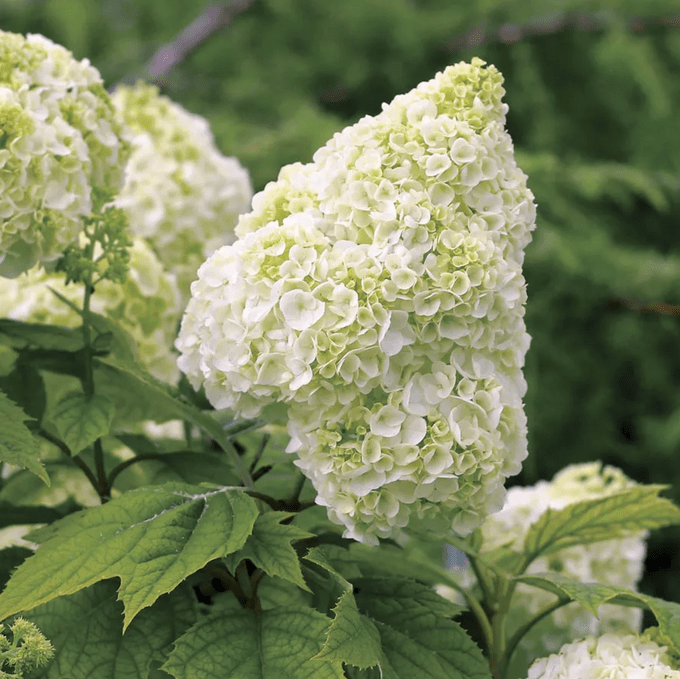
-
Miranda climbing hydrangea (H. petiolaris): This vigorous climber loves to cling onto rough surfaces like brick, but you can also use it as a groundcover. The white early summer blooms are enhanced by unique variegated foliage. (zones 4 to 8; 5 to 6 feet wide by 30 feet tall)
-
Gatsby Moon hydrangea (H. quercifolia): Like most oakleaf varieties, the Gatsby series is more tolerant of shady conditions. Gatsby Moon boasts big mophead-style white blooms. (zones 5 to 9; 6 to 8 feet tall and wide)
-
Skyland Giant climbing hydrangea (H. petiolaris): The delicate lacecap flowers backed by pretty heart-shaped leaves make this climber a garden favorite. (zones 5 to 7, up to 30 feet tall)
Next, find out if hydrangea flowers have special meaning?




















